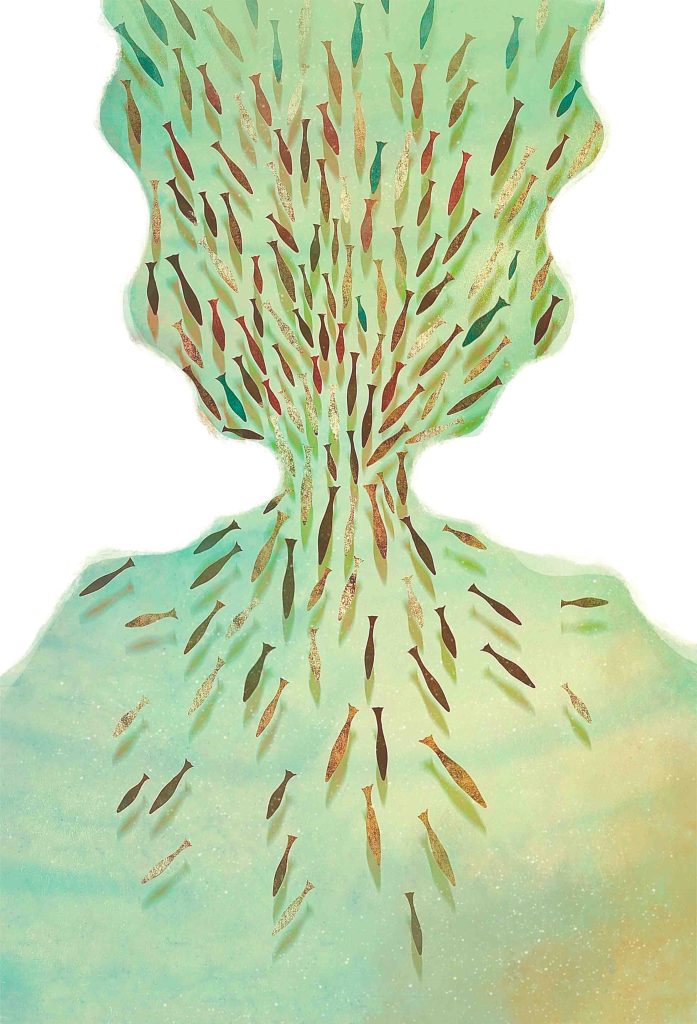In the early 1900s, an astute naturalist noticed beetles crawling all over cycad cones in South Africa, an observation that seemed to suggest these ancient plants were insect pollinated. The implications were so surprising that Alice Pegler’s observations were included in a presentation by Professor Harold Pearson to the Royal Society of South Africa in 1906. The circumstantial evidence was, however, not enough to challenge the prevailing paradigm of the time, that all cycads and related plants that do not produce flowers (Gymnosperms) were wind pollinated. It seemed inconceivable that a cycad—one of earliest plant groups to evolve from fern-like ancestors and develop seeds roughly 280 million years ago—could be insect pollinated. Insect pollination was generally believed to be one of the defining features of the flowering plants which evolved and diversified more than 100 million years later.

It was only in 1986 that researchers working in a botanic garden in the USA proved beyond doubt that some cycads were indeed pollinated by beetles. Even more surprising was evidence that cycad pollination systems include highly specialized interactions where the insect larvae develop in the cycad cones. This form of mutualism compares to the better-known interactions between figs and fig wasps, rather than the clumsy and opportunistic beetle interactions associated with primitive flowering plants. Since then, insect pollination has been confirmed in all ten genera of living cycads, across all five continents where cycads occur, and it is likely that it occurs in most of the approximately 350 known species of cycads.
Insect pollination of cycads is far more than just a fascinating evolutionary and ecological riddle, it is also critical to the survival of this unique group of seed plants. They represent one of the most threatened groups of plants yet assessed for the IUCN’s Red List of Threatened Species, with roughly 70 percent of all cycads now at risk of extinction. Over the past two decades, as studies of cycad pollination have gained momentum, there has been an increasing incidence of cases where pollinators seem to have disappeared. In some cases, pollinators were recorded in earlier surveys but have not been found in subsequent studies, while, in others, attempts to find pollinators have failed and these cycad populations do not produce viable seeds.

The collapse of pollinator populations is not unique to cycads. There is a global concern about their decline and disappearance. So much so that it was one of the first thematic assessments for the Intergovernmental Science-Policy Platform on Biodiversity and Ecosystem Services (IPBES). In the case of cycads, the loss plants. The overall context may make all the difference, depending on how far the population is from neighboring populations as a possible source of pollinators, whether the habitat is sufficiently intact to cater for other requirements of pollinators, such as shelter between coning seasons, and possible impacts of land use practices, particularly fire intensity and frequency or use of pesticides.
The absence of pollinators could be a major barrier for any attempts to recover or re-establish cycad populations. If we can’t get the pollinators back, is there any hope of reversing the trend towards extinction? This is still an open question and studies are currently underway to determine what is possible. There are some hopeful signs.

Many cycads have more than one pollinator species—a form of insurance if one pollinator is absent. For example, one recurring pattern amongst the known pollination systems is for pollination by weevils (beetles in the family Curculionoidea) as well as one or two other beetles (often Cucujoidea beetles). Where this combination exists, one pollinator may be quite specialized and will pollinate only one or a few species, whereas the more generalist pollinator will visit a wider range of cycad species. This opens up the possibility of reintroducing more generalist pollinators from populations of other cycads even if the more specialized pollinator is extinct.
Another promising avenue is to determine whether cycad pollinators have survived in botanic gardens and private collections. Plants in gardens tend to cone more frequently than in the wild and pollinator populations can become naturalized in gardens. The first experimental study of insect pollination is a great example. The study was carried out at Fairchild Tropical Garden in the USA on naturalized populations of pollinators that usually occur only in Mexico. Surveys of cycads in gardens may reveal insect pollinators that no longer exist in the wild or, just as important, show whether pollinators in gardens shift hosts and can develop in a wider range of cycad hosts than previously thought. If so, it could be possible to even re-introduce specialist pollinators into wild cycad populations.
The IUCN/SSC Cycad Specialist Group is leading a global initiative to reverse the extinction trend for cycads. It is becoming increasingly clear that this requires a greater understanding of risk and resilience associated with cycad pollination systems, and finding ways to recover and restore pollination systems wherever possible.
Further Reading
Norstog, K. J., D. Stevenson and K. J. Niklas. 1986. The role of beetles in the pollination of Zamia furfuracea L. fil.(Zamiaceae). Biotropica 18: 300–306.
Toon, A., L. I. Terry, W. Tang, G. H. Walter and L. G. Cook. 2020. Insect Pollination of Cycads. Austral Ecology
45(8): 1033–58. https://doi.org/10.1111/aec.12925.






